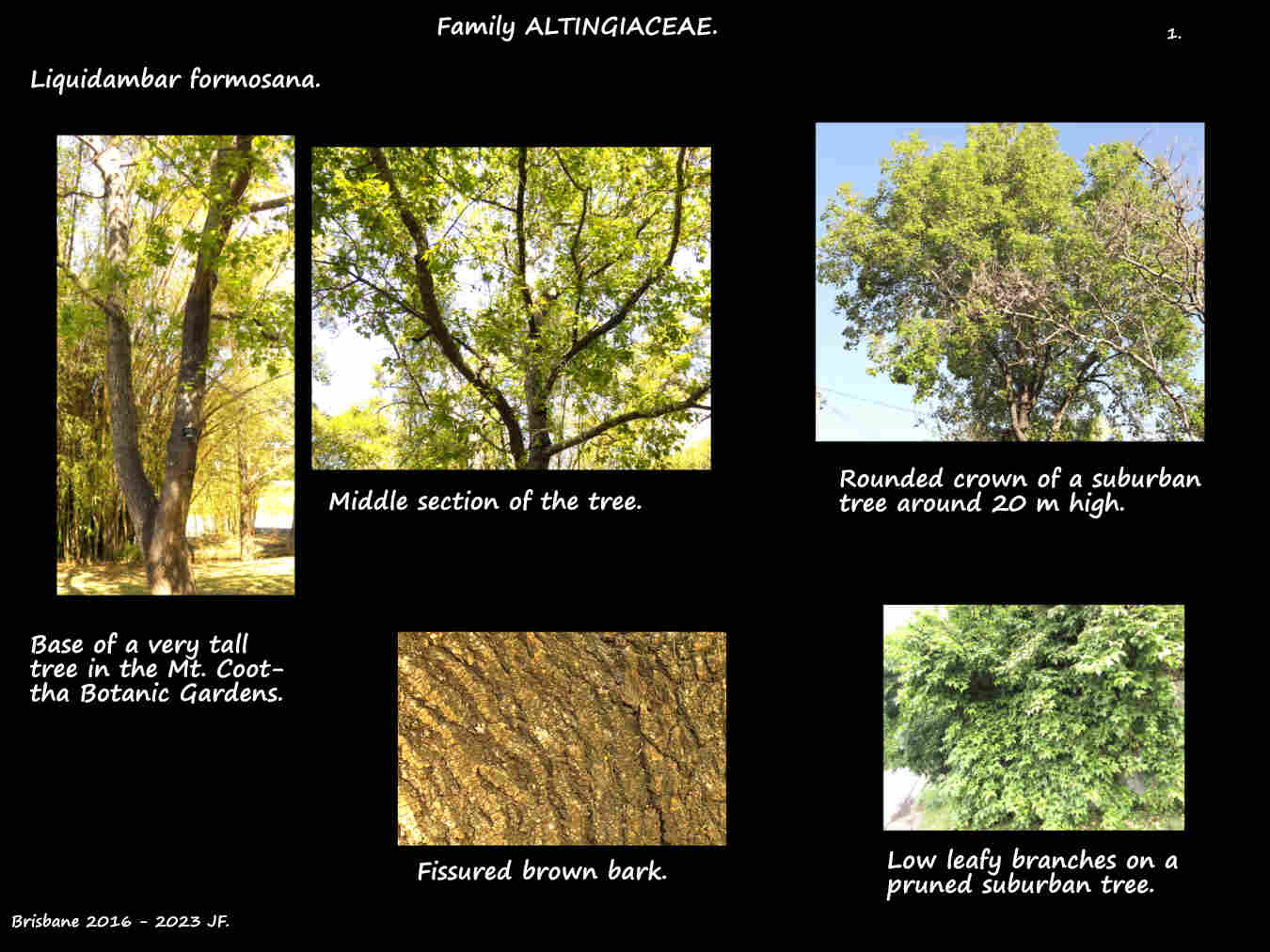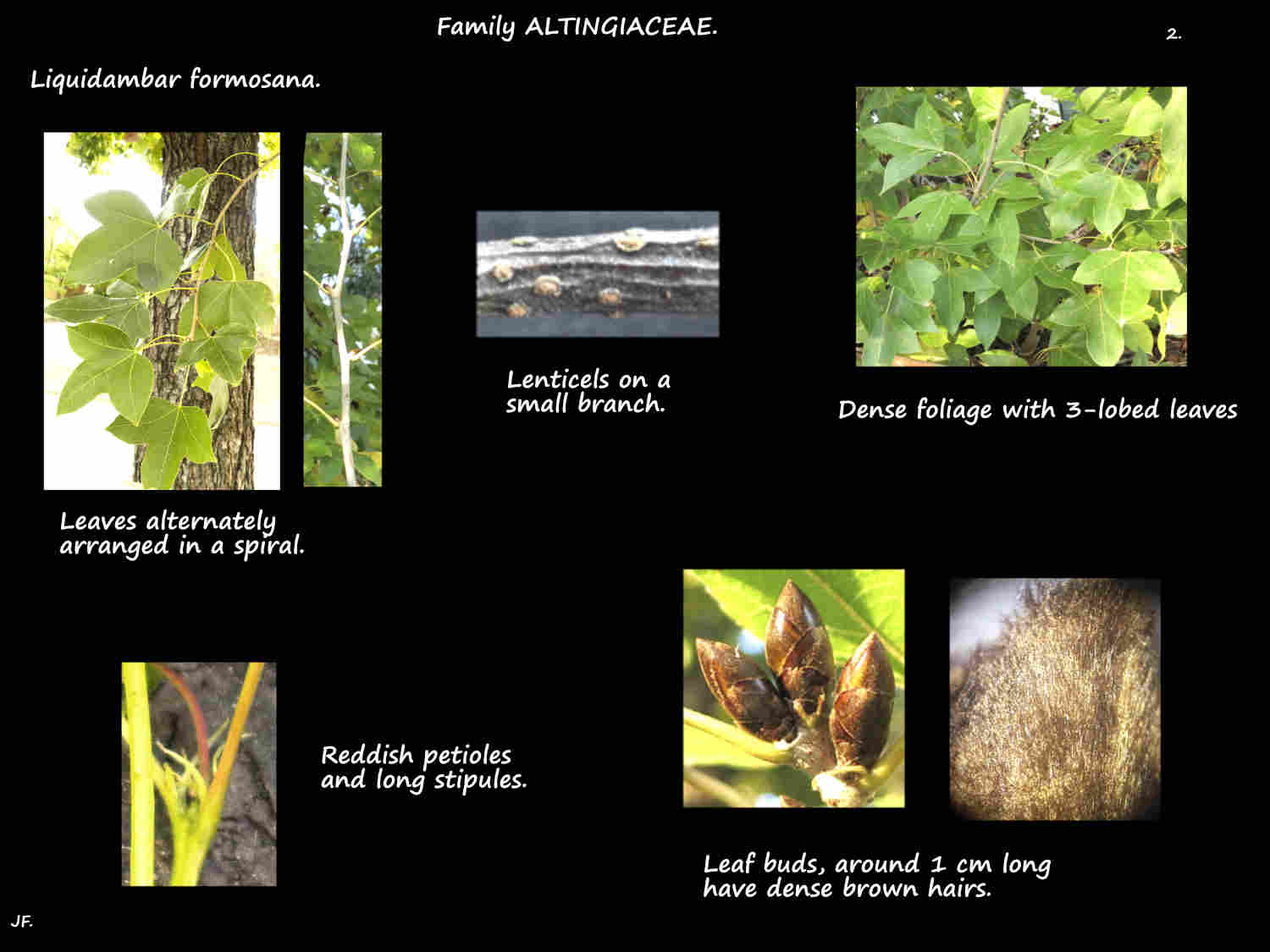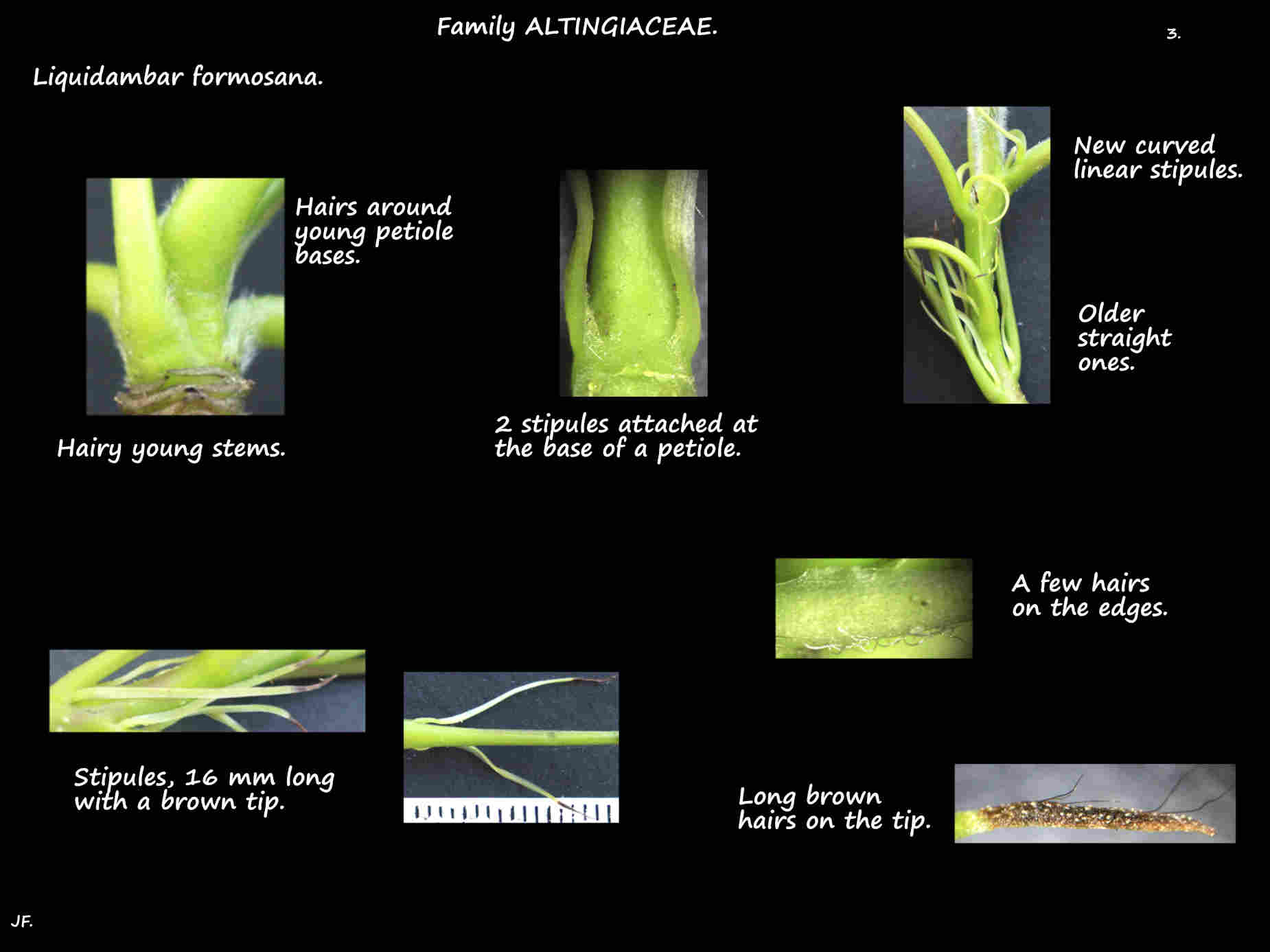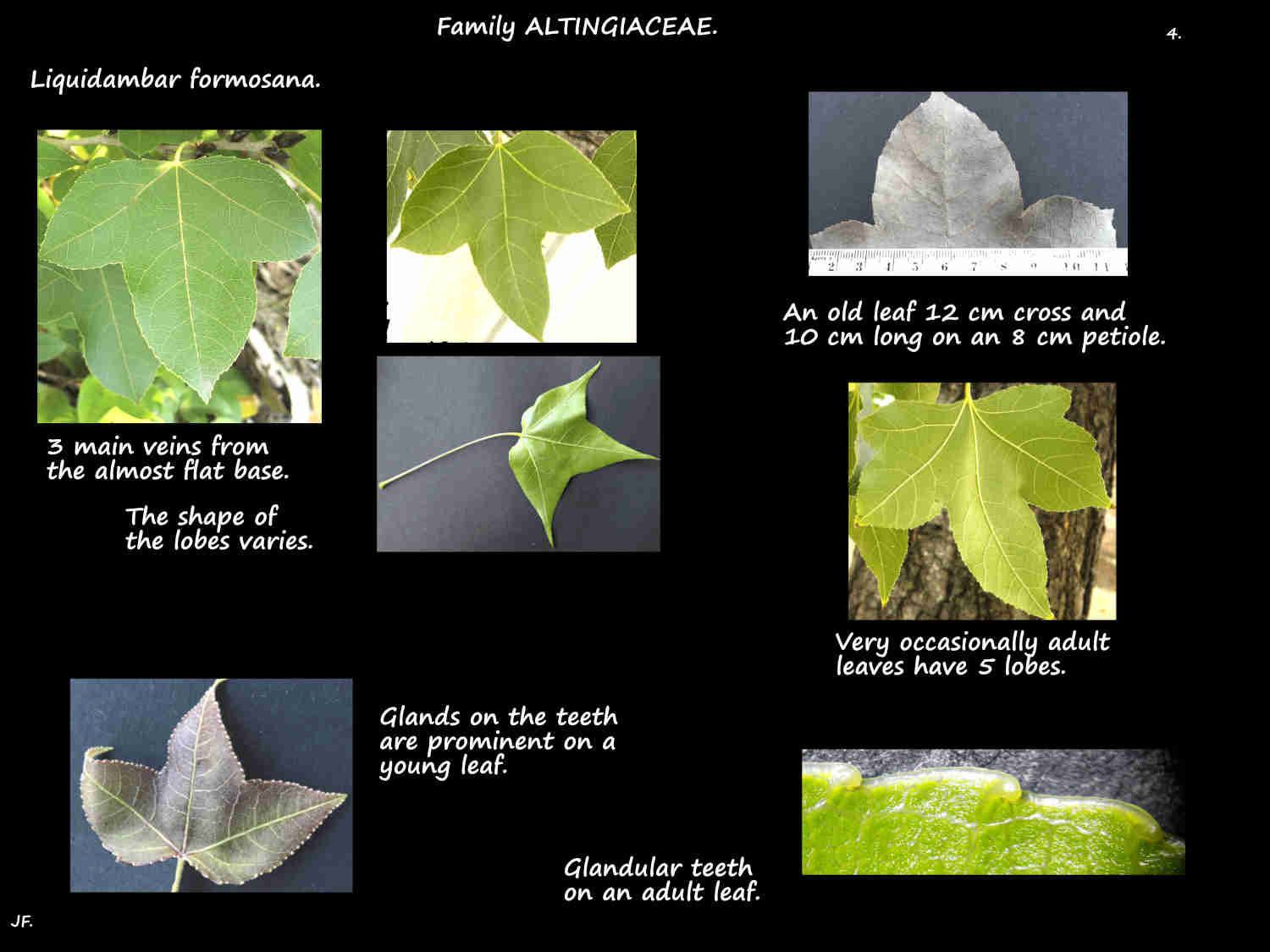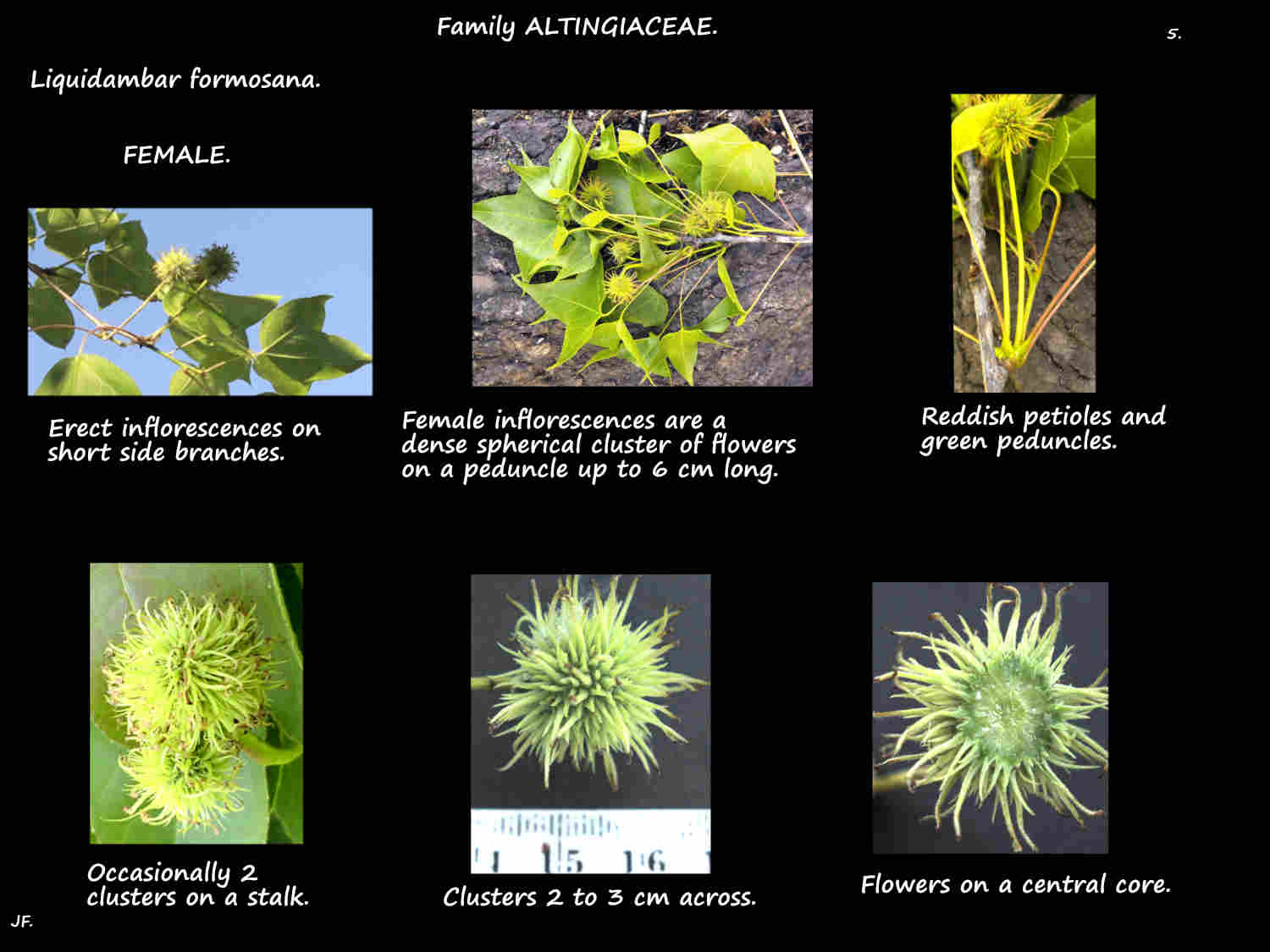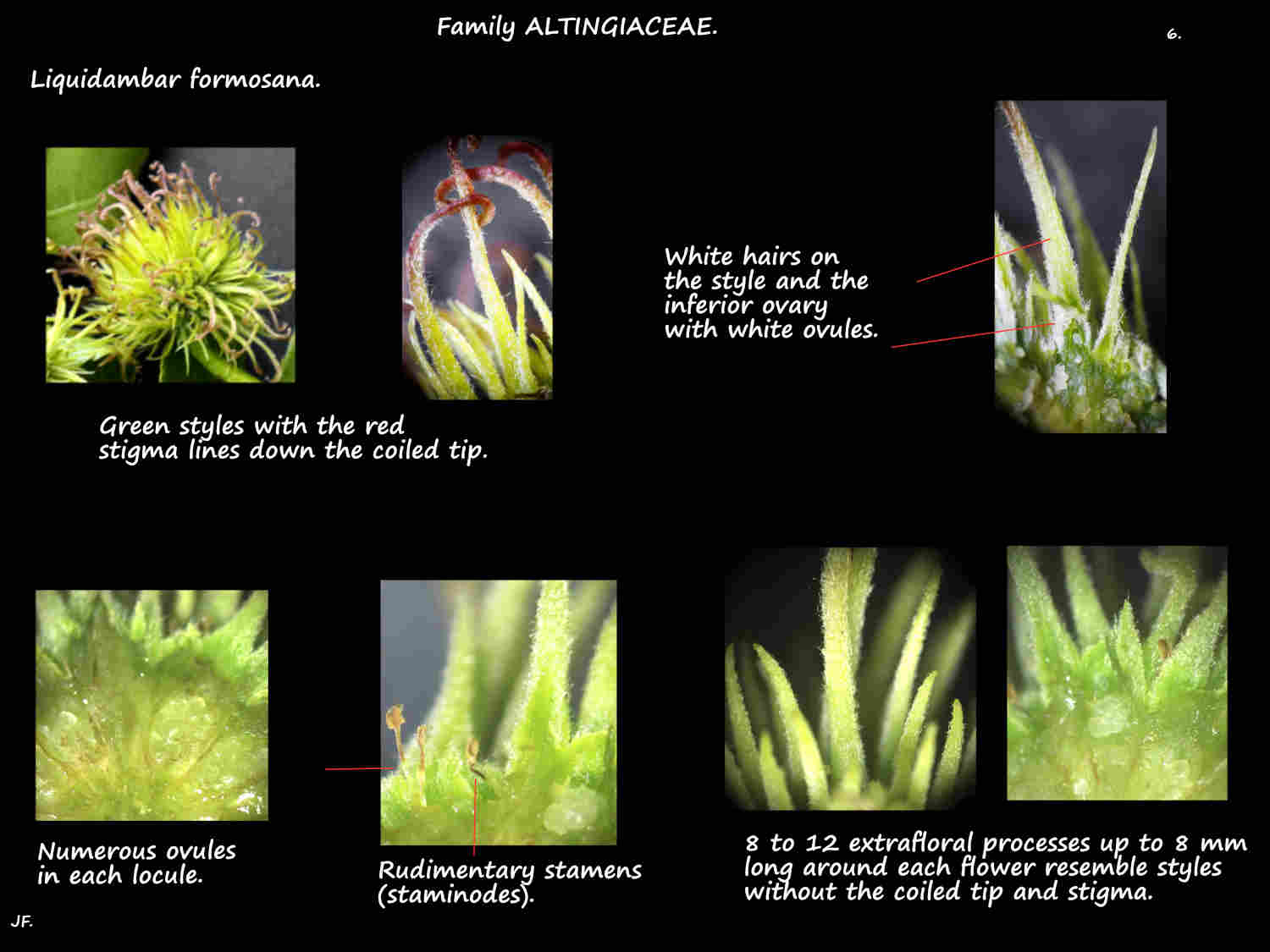Liquidambar formosana.
The Formosa sweet gum, native to southern China and Taiwan is occasionally seen in cultivation in Brisbane.
Deciduous trees, with a straight trunk and pyramidal then round or oval crown can be up to around 40 m high.
The trunk has brown to grey fissured bark and there may be large surface roots.
Smaller branches have small pale nodules (lenticels).
New growth may have hairs on the small twigs and leaf petioles.
The terminal winter buds have dense fine brown hairs on the outer surface.
Alternately arranged leaves are on a petiole around 8 cm long.
On or at the base of the petiole are reddish stipules 1 to 1.5 cm long.
Palmately divided leaf blades are 10 to 15 cm long and wide.
They have 3 lobes and 3 main veins from the flat or heart-shaped base.
The lobes have a pointed tip and glandular teeth on the edge.
Leaves, often described as having no hairs usually have some on both surfaces mostly on young
leaves and associated with the veins.
Hairs are fine small erect and branched.
New leaves are tinted and older leaves may become yellow to red in autumn depending on the climate.
The small greenish-yellow flowers are unisexual with both male and female on each tree.
Male and female inflorescences are a stalk with 1 or more dense spherical clusters of flowers on a central core.
Male flowers have no sepals or petals but numerous stamens with anthers on slightly longer filaments that are of different lengths.
Female inflorescences are on a peduncle around 5.5 cm long.
Each cluster has an average of 34 tiny flowers.
The inferior ovary, around 8.5 mm long has short fine hairs on it.
Each of the 2 (1) locules has numerous ovules tightly packed in a vertical row.
The top of the ovary merges with the style which is around 8 mm long.
The stigma runs down the tip of the style which is always coiled backwards.
Around each flower are 8 to 12 structures resembling the styles except that their pointed tip is not coiled back and has no stigma.
These extrafloral structures are 4 to 8 mm long with fused bases and they have vascular tissue.
It is not known if they are modified stamens (staminodes), styles or undeveloped flowers.
Present in all Liquidambars they are much longer in L. formosana than those seen in L. styraciflua which is the species most commonly seen here.
Female flowers typically have no stamens but occasional mature ones may be seen.
The fruiting heads or infructescences are hard brown woody spherical structures with small capsules from the fertile female flowers on a central core.
The Gumballs are 2 to 3 cm across and the capsules, with curved persistent styles are around 8 mm long.
The extrafloral processes remain as bristle-like structures (often interpreted as staminodes) around each capsule.
Typically, only a few ovules in each capsule develop into mature seeds.
The flat brown seeds have a prominent apical wing.
J.F.

